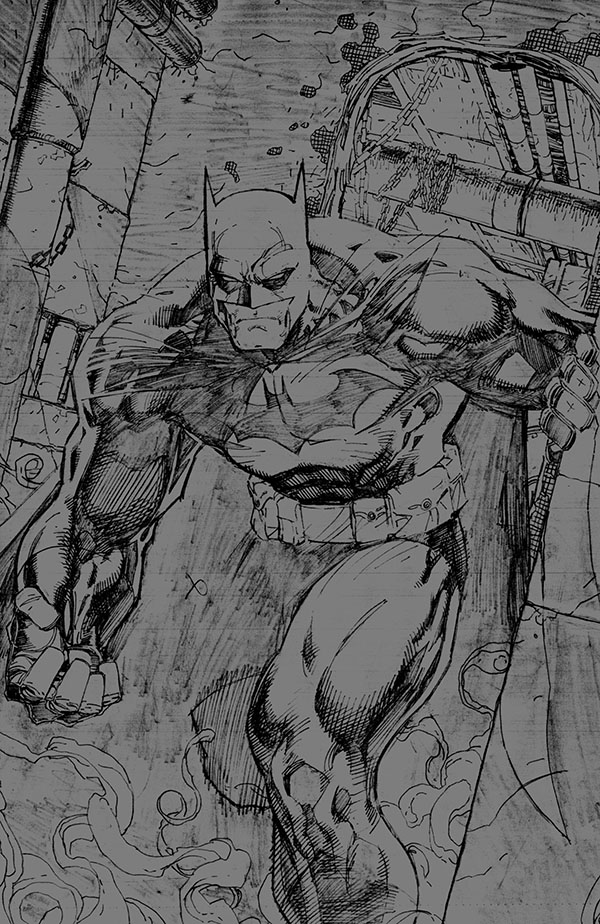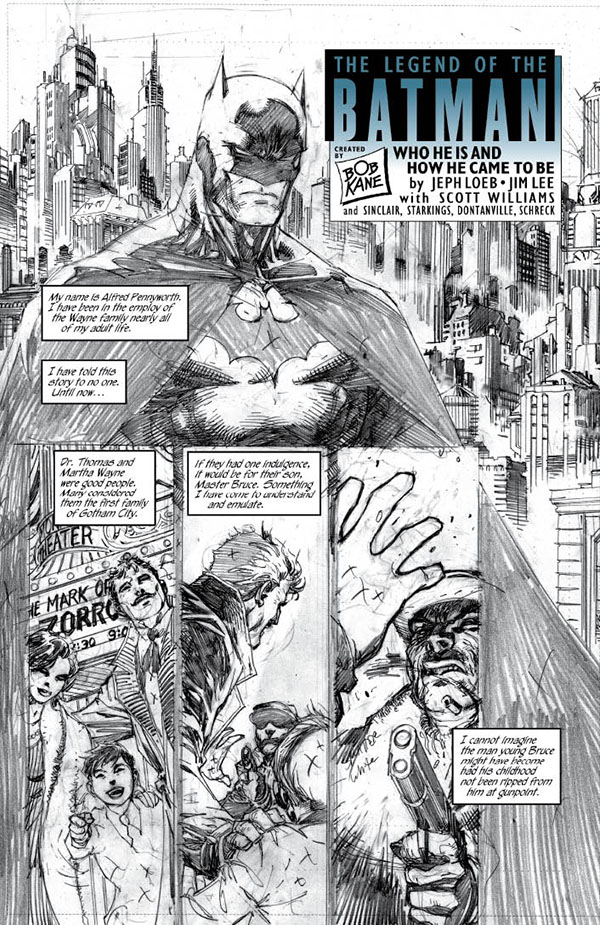State of the Art: Jim Lee on the Evolution of Batman
Art by Jim LeeToday, July 23rd, is Batman Day: a celebration of one of pop culture’s most adored, salient myths. Launched 75 years ago in the pages of Detective Comics #27, billionaire orphan Bruce Wayne and his therapeutic vigilantism have become enduring symbols of resiliency and uncompromising hope. Also: he looks damn cool. Batman’s aesthetic may be rooted in the gothic noir of Dracula and Nosferatu, but it’s since grown into something far more malleable and fascinating over the years, segueing between urban guerrilla acrobat, grizzled brawler and even sterling ‘50s homage, depending on the artist.
Of those artists, Jim Lee’s weighty interpretation of the Dark Knight has emerged as one of the most memorable, if not the default visual interpretation of the character’s modern look. The DC Comics Co-Publisher has stewarded the character through such landmark story arcs as “Hush” with writer Jeph Loeb as well as the controversial All Star Batman & Robin with Frank Miller. Much like he did with the X-Men, Wildcats and Superman, Lee’s approach to the property is instantly recognizable, merging a seamless energy with freeze-frame poses of cinematic grandeur.
To celebrate the hero Paste named the “Best Comic Book Character of All Time,” we chatted with Lee about his approach to illustrating Batman as well as how his look has evolved through the decades.
![]()
Paste: Starting out, what are the basic guidelines and strategies you use to illustrate Batman?
Jim Lee: I think my chief inspiration were all the Batman stories I loved as a kid and as a fan growing up. That goes all the way back to the Dick Sprang ear of work from the ‘40s and ‘50s. I remember as a little kid going to the library and checking out a hardcover that had a compilation of Batman stories over the ages. I loved the craft, simplicity, creativity and originality of those stories. As I got older, I really got into the Neal Adams, Jim Aparo Batman, which is a darker, grittier version of the character.
But what really inspired me to be a comics professional and a professional artist was Frank Miller’s Dark Knight Returns, which was 1986 — the year I graduated from college. So years later in 2003, I did my first run on Batman: Hush. I really tried to morph and centralize all the things I love about other artists’ take on Batman. I think, in a way, you want to be inspired by what they did, but not ape, copy or mimic it. It was really my unique blend of all of those influences. Even then, over that run of twelve issues, I think he started out more as a Frank Miller boxy Batman and evolved into a more lithe, acrobatic, dynamic Neal Adams-type Batman.

But even then later, when I did All Star Batman & Robin and the Batman of the New 52, I tweaked the costume. I began to bring in elements of things I’d seen in the games and movies — the approach they took and how they segmented the armor and used light-weight, almost carbon fiber type materials, or Kevlar materials. I incorporated modern elements like that. So, I think it’s a mix of what you grew up on, and what you’re seeing other creators do, and your own sensibilities.
In general, it’s very fun to work in comics because there’s no rule book, per se. You’re really guided by your own creative impulses and guiding light. And, obviously, you’re collaborating with writers and editors, and they have a huge influence on what you do. Artistically speaking, there’s a lot of freedom to interpret some of the most iconic-looking characters in the world, in a way that’s very recognizably yours. I can’t say that for a lot of other characters. I can’t draw Mickey Mouse my way. Or even Archie for that matter.
With Batman, we actually have a huge business where we sell all of these artists’ interpretations of the costume through the black and white statue line. They’re hugely successful and popular, because I think the fans understand that it’s Batman, but at the end of the day, the story is being told by creators. Fans really like the fact that creators take some liberty with the core essence of Batman and present these stories through their own filter.
-

-

-

-

-

-

-

-

-

-

-

-

-

-

-

-

-

-

-

-

-

-

-

-

-

-

-

-

-

-

-

-

-

-

-

-

-

-

-

-










































